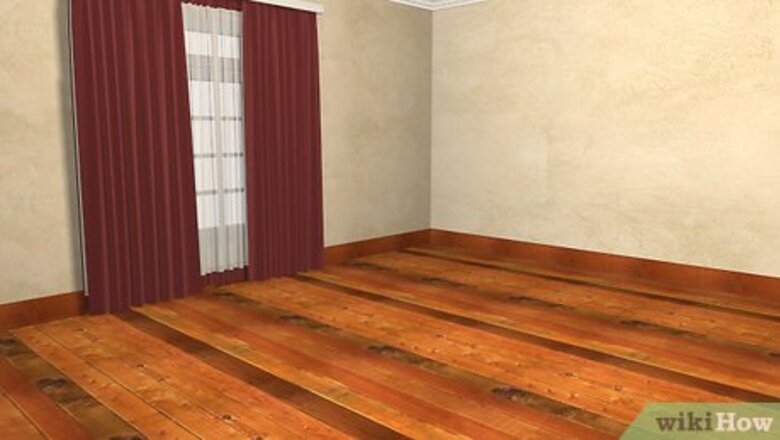
views
Preparations
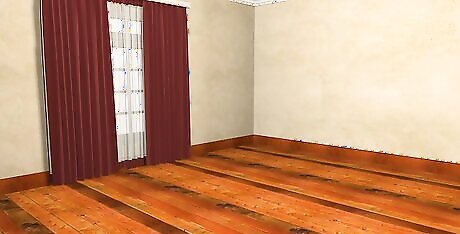
Determine what to do with the wood. If the wood is still in fairly good condition, you might want to consider selling or donating it. If, on the other hand, the wood is mostly rotten, there may not be much to salvage. In that case, discarding it is probably the most practical thing to do. For wood that you plan to sell, you should work carefully to minimize the amount of damage you do to the boards when removing them. Also note that you should be using a carbide blade on your saw.
Set the blade of a circular saw. You'll need a circular saw for at least part of this process. Set the blade of the saw so that it matches the thickness of the wood boards. The depth of the saw is the distance between the blade guard and the bottom of the circular blade. Hardwood floor boards can vary in thickness, but many are generally around 5/8 inch (1.59 cm) thick. If you do not set the blade to match this thickness, you run the risk of cutting through the boards and into your subflooring (the base floor beneath your floor boards).
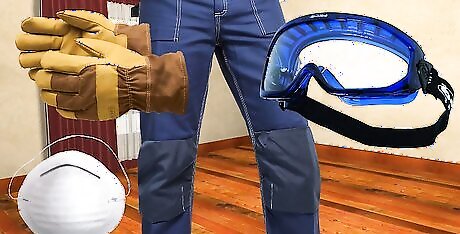
Take a few safety precautions. You should wear a dust mask, safety goggles, heavy work gloves, and knee pads while working on this project. The gloves and knee pads can help protect and cushion your hands and knees, respectively, as you crawl around to complete the project. This project throws plenty of sawdust into the air, and that dust could irritate your lungs or eyes if it gets into them. The safety goggles and dust mask can protect you. Also note that you should open the windows in the room for better ventilation throughout the process.
Removing the Floor Boards
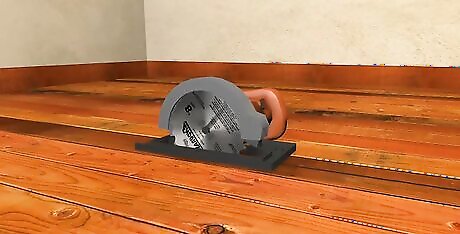
Make a cut down the length of one board. Use your circular saw to cut down the entire length of one board. This cut should be made as close to the lengthwise center as possible. For best results, choose a board with its length located along one of the perimeter sides of the floor. Removing your first sacrificial board here will make it easier to access and remove over boards further in. Alternatively, you could use a pry bar to lift up the first few boards along one side of the floor's perimeter. This option is easiest to do if you have square-edged boards with at least one exposed edge.
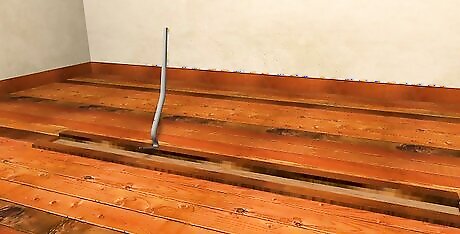
Tear the board out. Slip the tongued end of a pry bar beneath the cut board and lift both halves of the board up. Once the two halves are free, remove them from the area. The easiest way to do this is usually by wedging the pry bar in between the slit you just created and prying up both halves one at a time. With the tongued end of the pry bar beneath the board, press down on the long handle end. The lever force of this action should be enough to pry up the wood, but it may take multiple tries before the nails and staples holding the board allow it to break free. If the pry bar is too bulky to work with for this step, switch to the blade of a bolster chisel. Use that the pry up both cut halves, instead, working it in the same way as a pry bar.
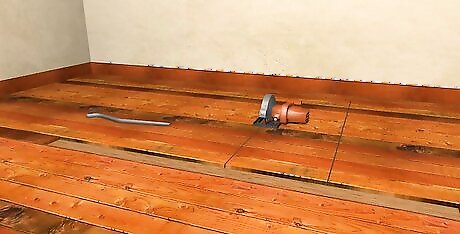
Consider cutting the remaining boards. If you don't need to preserve the floor boards in long, whole pieces, it will be easier to cut each board into smaller sections before removing it. Using your circular saw, cut crosswise lines across the rows of floor board. Each line should divide the boards into 1 to 2 foot (30.5 to 61 cm) long sections. These cuts must lie perpendicular to the direction the boards are presently laying in. If you do want to preserve the length of the floor boards, however, it is possible to remove the boards without cutting them into smaller chunks. The choice is ultimately yours to make, and the steps for removal are essentially the same either way.
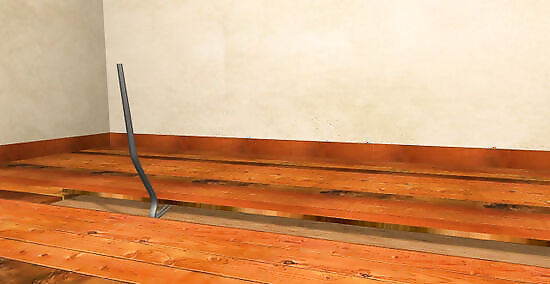
Work one at a time. You will need to pull up each board or each cut section of board individually. Wait until completely removing one board before moving onto the next. You should start with the board that lies directly adjacent to the first board you already pulled up. The purpose of pulling up the first board was to expose edges of the surrounding boards, so you should take advantage of these newly exposed edges.
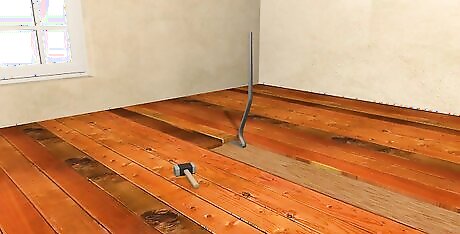
Lift the board using a pry bar. Wedge the tongued side of a pry bar beneath the board you intend to remove next. Press down on the handle end of the bar to begin lifting the board. If you wish to salvage the wood, you should work gently while lifting the each board. Position the pry bar so that the tongue is beneath the first nail holding the bar to the floor. Lift in the direction of the nail rather than working against it.
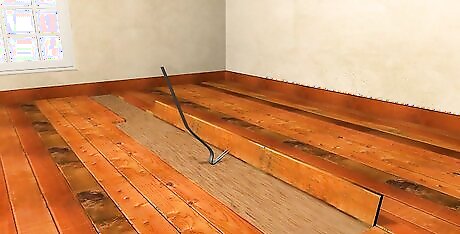
Work down the length of each board. Once the edge of the board has freed itself from the floor, slide the pry bar down the length of the board and over to the next nail. Lift the board up in this spot using the same type of motion and pressure. Continue working down the entire length of the board in this manner until the entire thing has been freed. When trying to save long boards of wood, you should remove each board gradually using this procedure. If you are only concerned about ripping away small sections of previously damaged wood, however, you can try ripping the board up in one motion instead of working it up gradually.
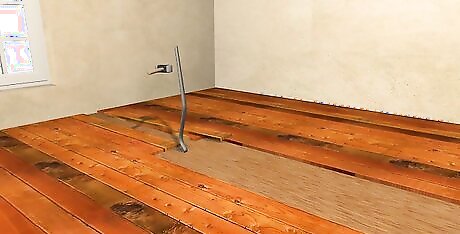
Use a mallet for stubborn boards. If you are unable to lift the boards with a standard pry bar, you may need to use the additional force a mallet can provide. Slide the tongue of the pry bar beneath the floor board as before. Strike the handle side of the pry bar with the heavy mallet. The force of this blow should cause the pry bar to lift the entire section of board without much (if any) additional work.
Repeat as needed. After removing one board or board section, you will need to remove the rest in the same manner. Continue until all of the floor boards have been ripped up. For best results, work from one side of the floor to the opposite side. Do not attempt to work from the perimeter toward the center or from the center outward.
Cleaning Up
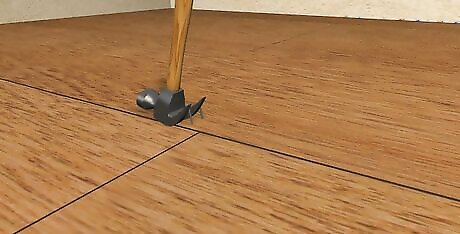
Remove any staples. Use a nail claw to remove the heavy staples from the exposed subflooring. Slide the hooked end of the nail claw beneath the top of each staple you spot. Carefully ease or rock the nail claw backward by pulling down on the handle. As you pull the claw back, the force should yank the staple out of the floor. For broken staples, you will need to use curved vice grips. Pinch the visible section of staple in between the mouth of the grips. Rock the staple back and forth while pulling in an upward direction. Eventually, the staple should pull free from the floor.
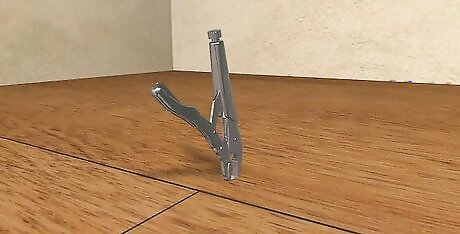
Pull out any nails. Use large locking pliers to remove nails from the floor and from any wood you plan to salvage. Grab the nail over or just beneath the head with the mouth of the pliers. Lift the nail straight out. If it resists the motion, gently work it back and forth while pulling it away. Continue until the nail lifts out completely.
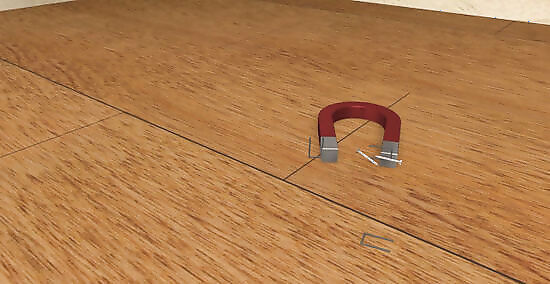
Gather the metal. Pass a large, powerful magnet over the floor. Most of the nails and staples should stick to this magnet. It may take several passes before all of the metal has been collected. Even after you've finished with the magnet, you should double-check the area to make sure that there are no stray nails or staples left. If necessary, pick up these strays by hand. Dispose of your scrap nails and staples after collecting them.
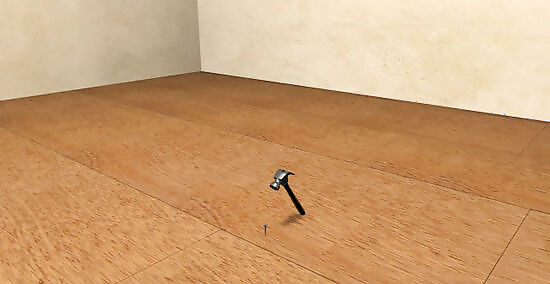
Mend the floor as necessary. Examine the subflooring. If any portion of it was damaged in the process, you should fix it now. For the most part, this will only involve re-nailing any subflooring sections that came loose while removing the floor boards. Oftentimes, the subflooring will have no damage at all. In this case, you can proceed without worry.
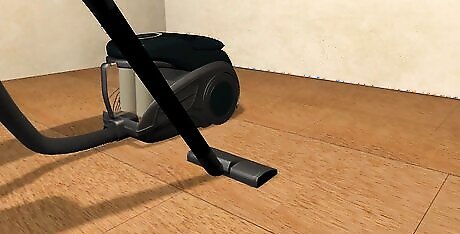
Clean away the dust. Use a shop vac to vacuum away all of the sawdust and remaining debris. It is best to use an industrial shop vac instead of a home vacuum cleaner. Larger pieces of debris could damage an ordinary vacuum cleaner. After you complete this step, the entire process is done.


















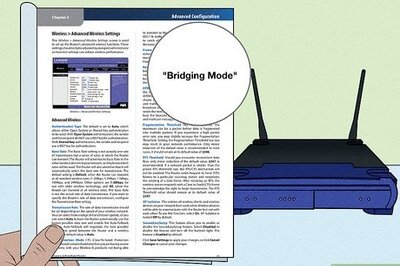

Comments
0 comment